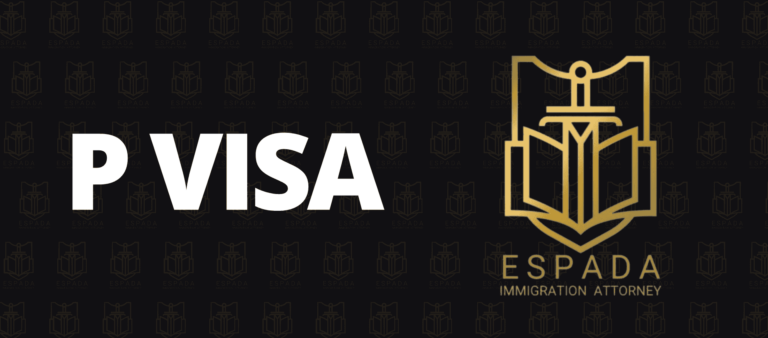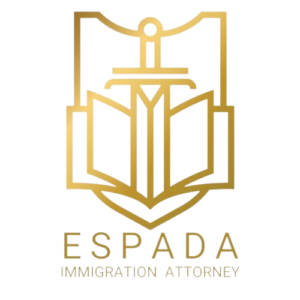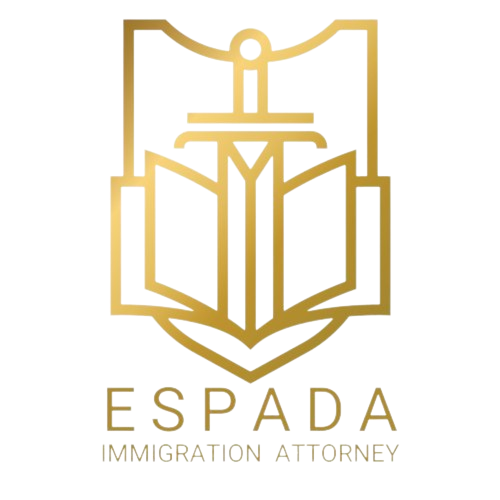P Visa Guide: Everything You Need to Know About the P Visa

The P visa is designed specifically for athletes and entertainers, providing them with the opportunity to participate in athletic events or performances in the United States.
In this guide, I will provide a comprehensive overview of the P visa and its key aspects. Should you have any questions about this visa, feel free to email me directly at abbas@espadaimmigration.com. I am highly responsive to emails and would be delighted to assist you.
Overview:
What is the P visa?
What are the benefits of a P visa?
What are the requirements for the P visa?
What are the responsibilities of the petitioner?
The P Visa Process
What documents are required for the P visa?
P Visa Fees
P Visa Processing Time
Conclusion
1. What is the P Visa?
The P visa is a specialized visa category designed for athletes and entertainers, allowing them to participate in athletic events or performances in the United States. There are three main categories under the P visa program.
- P-1 Visa: This visa is for individual athletes, athletic teams, or members of entertainment groups coming to the U.S. to participate in a specific competition or event.
- P-2 Visa: This category is designated for entertainers or entertainment groups participating in reciprocal exchange programs between organizations in the U.S. and another country.
- P-3 Visa: This visa is intended for artists or entertainers performing in culturally unique events or programs.
Additionally, essential support personnel, such as coaches or bandmates, may qualify under any of these categories. Spouses and dependent children of the principal beneficiary are eligible for P-4 status, which allows them to reside in the U.S. but prohibits employment.
The P visa is strictly for individuals actively working in their professional field. It is not suitable for activities like instructing camps or participating in promotional events.
- A P-1 visa for individual athletes is valid for up to 5 years, with a single extension of another 5 years.
- All other P visas are typically valid for up to 1 year, with the possibility of extensions for long-term engagements or events.
- There is no annual cap on the number of P visas that can be issued.
2. What Are the Benefits of a P Visa?
The P visa offers several advantages for athletes and entertainers:
Work Authorization in the U.S.:
The visa allows individuals to perform, compete, and work in their respective fields while in the United States.Family Accompaniment:
Spouses and dependent children can accompany the visa holder under the P-4 status. While they cannot work, they are permitted to attend school in the U.S.No Requirement for “Exceptional Ability”:
Unlike the O visa, which mandates proof of “exceptional ability,” the P visa only requires international recognition. This makes it a more accessible option for those who may not qualify for an O visa.
3. What Are the Requirements for a P Visa?
The eligibility criteria for P visas vary by category (P-1, P-2, or P-3) and profession. However, all applicants must meet these general requirements:
Nonimmigrant Intent:
Applicants must demonstrate they have a residence abroad they intend to return to after the visa expires. Although the principal visa holder can pursue permanent residency concurrently, essential support personnel cannot. The burden of proving nonimmigrant intent is higher for P-2 and P-3 applicants than for P-1.Impact on U.S. Workforce:
The visa petition may be denied if there is evidence of a strike or labor dispute at the intended worksite.Eligibility Based on Country of Origin:
Nationals of countries listed as state sponsors of terrorism may be ineligible unless deemed safe by the U.S. Secretaries of State and Homeland Security.
Additional Requirements for Specific Categories:
P-1 for Athletes:
- The applicant must solely participate in a specific competition, event, or tour.
- The activity must be of finite duration, with clearly defined start and end dates.
- The individual or team must be internationally recognized.
- Coaches are ineligible unless qualifying under specific exceptions, such as the COMPETE Act.
P-1 for Entertainment Groups:
- The group must have been established for at least one year.
- At least 75% of members must have been part of the group for at least one year.
- The group, rather than individual members, must demonstrate international recognition.
P-2 for Artists and Entertainers:
- Participation in a reciprocal exchange program is required.
- The exchange program must ensure parity between U.S. and foreign performers regarding conditions and performance level.
P-3 for Culturally Unique Performances:
- The program must be distinct and reflective of a specific cultural tradition or heritage.
- It may involve either teaching or performing.
Exceptions
Certain exceptions apply to the above requirements:
- Groups with significant national recognition may bypass the international recognition criterion.
- Up to 25% of group members may be exempt from the one-year membership rule.
- Circus performers are exempt from the one-year membership requirement and only need national (not international) recognition.
An immigration lawyer can help determine if you meet these requirements or qualify for any exceptions.
Final Note
The P visa is a valuable option for athletes and entertainers seeking to work in the U.S. Whether you are applying for a P-1, P-2, or P-3 visa, understanding the specific criteria and requirements is crucial. An immigration lawyer, such as myself or a member of my team, can guide you through the process and help secure your visa approval.
4. Responsibilities of the Petitioner
Petitioners play a crucial role in the P visa process, as they file petitions on behalf of the beneficiaries. The petitioner can either be the employer or a third-party organization. The beneficiary refers to the foreign national seeking entry into the U.S. under a P visa.
In cases where multiple beneficiaries are part of the same group, they can be included in a single petition. However, if a beneficiary is working for multiple employers, each employer must file a separate petition unless an authorized agent files a single petition on behalf of all employers.
Additionally, the petitioner is responsible for covering the cost of the beneficiary’s return to their home country once the program concludes. This responsibility is waived if the beneficiary decides to leave the program voluntarily before its conclusion.
5. P Visa Process
The P visa application involves multiple steps, including:
- Preparing and submitting the P petition
- Filing the P visa application
- Arrival in the United States
Below is a detailed explanation of each step. Consulting an immigration lawyer can make this process smoother and more efficient.
Preparing and Submitting the P Petition
The first step is to submit a petition for P visa status. The petitioner must file two copies of the petition with the United States Citizenship and Immigration Services (USCIS). Petitions can be filed up to one year before the intended start date. Essential support personnel must be included in a separate petition from the primary beneficiaries.
In the event of a denied petition, an appeal can be made to the Administrative Appeals Office (AAO). An experienced immigration lawyer can provide guidance on the petition process and assist with preparing the necessary documents, which include:
- Cover Letter: Introduces the case, outlines the request, and explains eligibility.
- Form G-28: Authorizes an attorney or representative to act on the petitioner’s behalf.
- Form I-907: For those opting for premium processing (response within 15 days).
- Form I-129 with O and P Classifications Supplement: Provides detailed information about the petitioner, beneficiary, and job details.
- Support Statement: Highlights the beneficiary’s achievements and explains the petitioner’s qualifications and assignment specifics.
- Index of Exhibits: Lists all supporting documents, such as contracts and advisory opinions.
Two key documents include:
- Contract: Outlines job duties, wages, schedule, conditions, and benefits.
- Advisory Opinion: Written by a labor organization, it confirms the beneficiary’s qualifications and job duties. In certain cases where no labor organization exists, expert opinions or independent evidence may suffice.
P Visa Application
Once the P petition is approved, one copy is sent to the appropriate consulate through the Kentucky Consular Center (KCC). The beneficiary, petitioner, and their attorney will receive notification of the approval.
The beneficiary can then schedule a visa interview at a local U.S. consulate, which can take place up to 90 days before the program’s start date. At the interview, the beneficiary must present:
- Petition approval notice
- Continued statement of support from the petitioner
- Certified copy of the petition
- Evidence of foreign residence and nonimmigrant intent
Note: A consular officer has the authority to reduce the visa duration from what was initially requested in the petition.
Arrival in the United States
Beneficiaries can enter the U.S. up to 10 days before the official start date but cannot begin working until the specified start date. Upon arrival, beneficiaries should have their passport, P visa, and petition approval. They will receive an I-94 card or a passport stamp, which should match the expiration date listed on the visa.
6. Required Documents for the P Visa
The documentation required for a P visa varies depending on the specific case. Below is a general list of documents that may be needed:
- Basic details about the employer
- Description of the event, competition, or performance
- Copy of employment contract
- Evidence of international recognition
- Documentation of reciprocal programs
- Evidence of cultural uniqueness (if applicable)
- Resume and transcripts of the foreign national
- Passport biographic page(s) for the applicant and dependents
- Letters of support from previous employers or industry experts
- Detailed itinerary
- Wage documentation
- Business license
- Federal tax returns
- Written consultation from a labor organization
- Evidence of residence abroad (e.g., property deed, mortgage, or tax records)
This list is not exhaustive. Consulting with an experienced immigration lawyer can help ensure all necessary documents are prepared correctly.
7. P Visa Fees
Applying for a P visa involves certain fees that applicants should account for. Keep in mind that these fees may change over time.
- Petition Filing Fee: $460 (to be paid by the petitioner)
- Visa Filing Fee: $160 (to be paid by the petitioner)
- Additional Costs: Expenses for translations, photocopying, and other related tasks may vary depending on individual circumstances.
8. P Visa Processing Time
The time required to process a P visa application can vary based on several factors, such as the season, the specific USCIS Service Center processing the petition, and the U.S. consulate where the application is submitted. Generally, the process takes approximately 3 to 6 months in total.
9. Conclusion
The P visa offers a valuable opportunity for athletes and entertainers who wish to perform or compete in the United States. By now, you should have a clearer understanding of the P visa, including its requirements, benefits, and the application process.
If you have any questions or need assistance regarding the P visa or anything covered in this guide, feel free to contact me directly at abbas@espadaimmigration.com. I respond promptly to emails and would be happy to assist you.
Why Choose Us
Choosing the right immigration lawyer can make all the difference in achieving your U.S. immigration goals. At Espada Immigration Lawyer, we are dedicated to providing exceptional legal guidance and personalized support through every step of the process. Our team combines specialized expertise, transparency, and an unwavering commitment to client success, making us a trusted partner for all your immigration needs.
- Specialized Expertise
- Personalized Approach
- Transparent Guidance
- Client-Centered Commitment

DISCLAIMER: This article is provided for general informational purposes only and does not constitute legal advice. The information herein should not be interpreted as formal legal counsel nor does it establish an attorney-client relationship. This article is neither intended as a solicitation for legal services nor as a substitute for individual legal advice. For specific legal guidance, please consult an attorney in your jurisdiction. Actions based on information in this article are taken at your own risk, and I disclaim any liability for such actions. Please note that information may have changed since publication and may no longer be current. This article does not offer guarantees, warranties, or predictions regarding the outcome of any legal matters. Each case is unique, and results will depend on individual facts and legal issues. Thank you.
ATTORNEY ADVERTISING: Any invitation to contact our law firm on this website and related pages constitutes attorney advertising.
